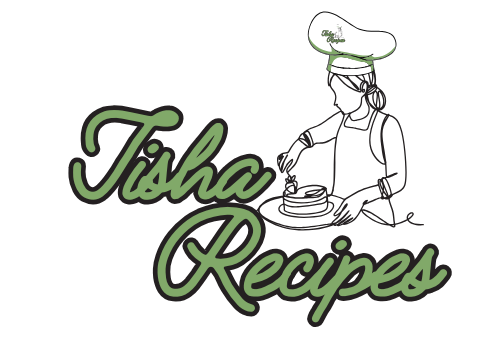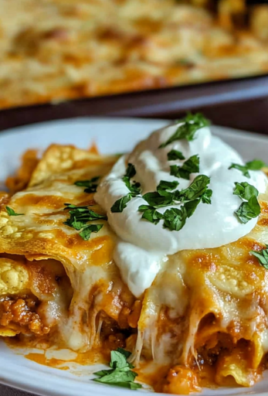
Classic lasagna is a dish that has captured the hearts and taste buds of people worldwide. Known for its comforting layers of pasta, savory sauces, creamy cheeses, and perfectly baked golden top, lasagna is a masterpiece of Italian-American cuisine. It’s a dish that exudes warmth and tradition, often at the center of family gatherings, festive celebrations, and cherished memories.
While its preparation requires time and effort, the reward is a deeply satisfying meal that combines simplicity with sophistication. From the al dente pasta sheets to the rich ragù and velvety béchamel sauce, every element of lasagna contributes to its timeless appeal.
Etymology of Lasagna
The name “lasagna” finds its roots in ancient languages and culinary traditions. The word derives from the Greek “laganon,” which referred to flat sheets of dough. This term was later adopted by the Romans, who called it “lasanum,” meaning a cooking pot or container. Over time, the name evolved to represent both the pasta sheets and the layered dish itself.
The dish as we know it today has undergone centuries of refinement, but its etymological journey reflects the enduring appeal of layered pasta dishes across cultures and eras.
Historical Development
Ancient Beginnings
Lasagna’s origins can be traced back to ancient Greece and Rome, where flatbread-like doughs were used in layered dishes. These early forms of pasta were made from simple combinations of flour and water, then baked with meat and other ingredients.
Medieval Adaptations
By the Middle Ages, pasta-making techniques had evolved, and the concept of lasagna began to take shape. In 14th-century Italy, a manuscript titled Liber de Coquina featured one of the first written lasagna recipes. This medieval version involved layering pasta with cheese and spices, though tomatoes had not yet become a part of Italian cuisine.
Renaissance Influence
The introduction of tomatoes to Europe in the 16th century, following the Columbian Exchange, transformed Italian cooking. Tomatoes became a staple ingredient in lasagna, particularly in the form of marinara or ragù. By this time, lasagna had become a symbol of indulgence, reserved for special occasions and wealthy households.
Modern Evolution
As Italy unified in the 19th century, regional variations of lasagna flourished. Each region incorporated its local ingredients and cooking techniques, leading to a diversity of lasagna styles, from the meat-heavy Lasagna alla Bolognese to the ricotta-rich Lasagna Napoletana.
Regional Variations in Italy
Italy’s diverse culinary landscape has given rise to multiple interpretations of lasagna, each reflecting the region’s unique ingredients and traditions.
Lasagna alla Bolognese
- Originating in Emilia-Romagna, this version features layers of pasta, béchamel sauce, and a rich ragù made from ground meats, onions, celery, carrots, and tomatoes. The pasta sheets are traditionally made with spinach, giving them a distinctive green hue.
Lasagna Napoletana
- Hailing from Naples, this variation incorporates ricotta cheese, mozzarella, and sometimes hard-boiled eggs or meatballs. The use of fresh basil and tomato sauce gives it a bright, tangy flavor.
Ligurian Lasagna
- In Liguria, pesto replaces tomato-based sauces, resulting in a fragrant and herbaceous dish. Often, béchamel is used to balance the bold flavors of the basil and pine nuts.
Coastal Variations
- Coastal regions, particularly in southern Italy, feature seafood lasagna with shrimp, scallops, and calamari layered with creamy sauces and delicate pasta sheets.
Lasagna’s Journey to the Americas
Italian immigrants brought lasagna to the United States and other parts of the Americas in the late 19th and early 20th centuries. As they settled in new communities, they adapted traditional recipes to incorporate locally available ingredients. This led to the addition of items like ground beef, sausage, and cheddar cheese, creating the Italian-American lasagna that is widely recognized today.
In America, lasagna gained immense popularity through its inclusion in restaurant menus, frozen food aisles, and home-cooked meals. Its hearty, versatile nature made it a favorite for family dinners and potlucks, cementing its place in the culinary culture.
Cultural Significance
Lasagna holds a special place in the hearts of those who prepare and enjoy it. Beyond its flavors, the dish represents connection, tradition, and the joy of sharing a meal with loved ones.
Family Traditions
- In many Italian and Italian-American households, lasagna is a centerpiece for Sunday dinners and holidays. The process of layering and baking the dish is often a family affair, with recipes passed down through generations.
Festive Celebrations
- Lasagna is a popular choice for celebrations, including Christmas, Easter, and weddings. Its generous portions and satisfying flavors make it an ideal dish for feeding a crowd.
Representation in Media
- From Garfield’s love for lasagna to its appearance in countless movies and television shows, lasagna has become a cultural icon that symbolizes comfort and indulgence.
Ingredients, Preparation Techniques, and Common Mistakes
Classic lasagna is a culinary masterpiece built on a foundation of simple yet carefully chosen ingredients. The art of making lasagna lies in the harmony of its components—pasta sheets, rich sauces, and creamy cheeses—all layered to create a dish that’s greater than the sum of its parts. This section provides an in-depth look at each ingredient, step-by-step preparation techniques, and tips to ensure your lasagna turns out perfect every time.
1. Essential Ingredients
Pasta Sheets
- Fresh vs. Dried Pasta
Fresh pasta offers a delicate texture that melts in the mouth, while dried pasta provides sturdiness and convenience. Both are suitable for lasagna, depending on personal preference and time constraints. - No-Boil Lasagna Sheets
These are pre-cooked and dried for convenience. While they save time, ensure your sauces are sufficiently moist to hydrate the sheets during baking. - Homemade Pasta Sheets
For an authentic experience, making pasta from scratch allows you to control thickness and flavor. Homemade pasta is particularly suited for dishes where the pasta itself is a star element.
Ragù (Meat Sauce)
- Traditional Composition
A classic ragù combines ground beef, pork, or veal with aromatic vegetables (onions, carrots, celery) and a tomato base. The slow cooking process melds these ingredients into a rich, hearty sauce. - Flavor Enhancements
Adding red wine, a splash of cream, or fresh herbs like thyme and rosemary deepens the sauce’s flavor. Some variations include pancetta or bacon for added smokiness.
Béchamel Sauce
- Role in Lasagna
This creamy white sauce adds a luxurious texture and balances the acidity of the tomato-based ragù. - Ingredients
Made from butter, flour, and milk, béchamel is seasoned with salt, pepper, and a touch of nutmeg for warmth. - Perfecting the Sauce
Cook the roux (butter and flour mixture) for 2–3 minutes to eliminate any raw flour taste. Gradually whisk in warm milk to prevent lumps and ensure a smooth consistency.
Cheeses
- Mozzarella
Essential for its melty, stretchy quality, mozzarella forms the gooey top layer of lasagna. For a creamier texture, use fresh mozzarella. - Ricotta
A staple in Italian-American lasagna, ricotta provides a creamy, slightly tangy layer. Mix it with eggs, Parmesan, and fresh herbs for added flavor and structure. - Parmesan or Pecorino Romano
These hard, aged cheeses offer a salty, nutty kick, enhancing the overall flavor of the dish.
Tomatoes
- Canned vs. Fresh
Canned tomatoes are often preferred for consistency and convenience. Whole San Marzano tomatoes, in particular, are prized for their sweetness and rich flavor. - Tomato Paste
Adding a small amount of tomato paste to the ragù intensifies its flavor.
Herbs and Spices
- Classic herbs like basil, oregano, and parsley bring brightness to lasagna. For a bold twist, try adding a pinch of red pepper flakes or smoked paprika.
2. Step-by-Step Preparation Techniques
Preparing the Pasta Sheets
- Boiling Dried Pasta
- Cook pasta sheets in salted boiling water until just al dente. Overcooked pasta can become mushy when baked.
- Lay cooked sheets flat on parchment paper to prevent sticking.
- Making Fresh Pasta
- Roll out dough to desired thickness using a pasta roller or rolling pin. Cut into sheets that fit your baking dish.
- Blanch fresh pasta sheets briefly in boiling water before assembling the lasagna.
Cooking the Ragù
- Heat olive oil in a large pan and sauté onions, carrots, and celery until softened.
- Add ground meat and cook until browned, breaking up any large chunks with a wooden spoon.
- Stir in tomato paste, canned tomatoes, and seasonings. Simmer the sauce on low heat for at least an hour, stirring occasionally.
Making the Béchamel
- Melt butter in a saucepan over medium heat. Add flour and whisk constantly for 2–3 minutes to create a roux.
- Gradually add warm milk, whisking to prevent lumps. Cook until the sauce thickens and coats the back of a spoon.
- Season with salt, pepper, and a pinch of nutmeg.
Assembling the Lasagna
- Layering
- Spread a thin layer of ragù on the bottom of a greased baking dish to prevent sticking.
- Add a layer of pasta sheets, ensuring they overlap slightly.
- Spread a layer of béchamel, followed by a layer of ragù, and sprinkle with Parmesan. Repeat until all ingredients are used, finishing with a generous layer of mozzarella.
- Baking
- Cover the dish with aluminum foil and bake in a preheated oven at 375°F (190°C) for 30–40 minutes.
- Remove the foil and bake for an additional 10–15 minutes, or until the top is golden and bubbly.
- Resting
- Allow the lasagna to rest for 10–15 minutes before slicing. This helps the layers set and makes serving easier.
3. Common Mistakes and How to Avoid Them
Watery Lasagna
- Problem: Excess moisture from sauces or improperly prepared ingredients can lead to soggy lasagna.
- Solution: Simmer sauces until thickened, and drain cooked vegetables and ricotta thoroughly.
Uneven Layers
- Problem: Improper layering can result in uneven textures and flavors.
- Solution: Spread each component evenly and avoid overcrowding any single layer.
Overcooked Pasta
- Problem: Overcooked pasta can turn mushy after baking.
- Solution: Cook pasta sheets to al dente and handle them gently during assembly.
Burnt Top Layer
- Problem: Leaving the lasagna uncovered for too long can cause the top layer of cheese to burn.
- Solution: Use foil during the first stage of baking and only remove it to brown the cheese at the end.
4. Tips for Perfection
- Homemade vs. Store-Bought
While homemade pasta and sauces elevate the dish, high-quality store-bought options can save time without compromising flavor. - Layering Techniques
For maximum flavor distribution, ensure each layer contains a balance of pasta, sauce, and cheese. - Enhancing the Ragù
For a richer sauce, add a splash of cream, a pat of butter, or a Parmesan rind during cooking. - Using Fresh Herbs
Garnishing with fresh basil or parsley just before serving brightens the dish and enhances presentation. - Cooking for a Crowd
Double the recipe and use a larger baking dish for gatherings. Leftovers freeze well for future meals.
Variations, Pairings, and Creative Leftover Ideas
Classic lasagna is a dish that lends itself to endless creativity and versatility. From innovative variations to thoughtful side pairings, and exciting ways to reinvent leftovers, this section dives into all the ways to make the most of this beloved recipe.
1. Popular Variations of Classic Lasagna
Vegetarian Lasagna
A vegetarian version of lasagna focuses on fresh vegetables, plant-based proteins, and alternative sauces to create a dish that’s just as satisfying.
- Vegetable Layering
- Replace meat with sautéed zucchini, eggplant, spinach, mushrooms, or bell peppers.
- Use roasted butternut squash or sweet potatoes for a touch of sweetness.
- Plant-Based Protein
- Incorporate lentils, chickpeas, or crumbled tofu as a protein-packed substitute for meat.
- Sauce Alternatives
- Use marinara sauce with added vegetable purée for a nutrient boost.
- Incorporate pesto, roasted red pepper sauce, or creamy Alfredo for unique flavors.
Seafood Lasagna
Seafood lasagna introduces delicate, briny flavors to the classic dish.
- Protein Choices
- Use shrimp, crabmeat, scallops, or flaky white fish.
- Incorporate smoked salmon for a rich, savory layer.
- Sauce Variations
- Replace marinara with a creamy béchamel or seafood bisque-inspired sauce.
- Add lemon zest and fresh dill for a bright, aromatic finish.
Gluten-Free Lasagna
For those with dietary restrictions, gluten-free lasagna offers all the flavor without the wheat.
- Gluten-Free Pasta Sheets
- Use pasta made from rice, lentils, or chickpeas. Ensure they’re cooked to al dente to prevent breaking.
- Vegetable-Based Layers
- Thin slices of zucchini, eggplant, or sweet potatoes can replace traditional pasta sheets.
- Thickened Sauces
- Use cornstarch, arrowroot powder, or gluten-free flour to thicken béchamel sauce.
Low-Carb and Keto Lasagna
For a low-carb option, traditional pasta is swapped with lighter alternatives.
- Zucchini Noodles
- Thinly slice zucchini and use it in place of pasta sheets. Salt and pat dry before layering to remove excess moisture.
- Cabbage Leaves
- Lightly blanched cabbage leaves create sturdy, low-carb layers.
- Cheese Focus
- Increase the use of ricotta and mozzarella to create a more indulgent, keto-friendly dish.
2. Perfect Pairings for Lasagna
Salads
Balancing the richness of lasagna with a fresh salad enhances the meal.
- Caesar Salad
- Crisp romaine lettuce, Parmesan shavings, and crunchy croutons dressed in creamy Caesar dressing complement lasagna’s robust flavors.
- Caprese Salad
- Slices of ripe tomatoes, fresh mozzarella, and basil drizzled with olive oil and balsamic glaze add a bright, tangy contrast.
- Mixed Greens with Lemon Vinaigrette
- A light salad with arugula, baby spinach, and sliced radishes refreshes the palate.
Bread
Bread is a classic accompaniment that enhances the experience of lasagna.
- Garlic Bread
- Serve warm, buttery garlic bread to soak up the rich sauces.
- Focaccia
- This olive oil-infused Italian bread pairs well with lasagna’s flavors.
- Breadsticks
- Light and crisp, breadsticks are perfect for dipping into extra marinara sauce.
Vegetable Sides
Adding vegetables to the table complements lasagna while boosting the meal’s nutritional value.
- Roasted Vegetables
- Asparagus, Brussels sprouts, or carrots roasted with olive oil and garlic bring a caramelized sweetness.
- Grilled Zucchini
- Lightly charred zucchini slices seasoned with lemon and herbs add a smoky, fresh element.
- Steamed Broccoli
- Toss with olive oil, garlic, and a squeeze of lemon for a simple yet flavorful side.
Wine Pairings
- Red Wine
- A medium-bodied red like Chianti, Sangiovese, or Merlot complements the savory richness of lasagna.
- White Wine
- A crisp Pinot Grigio or Sauvignon Blanc balances the dish’s creamy béchamel and cheese.
3. Creative Ways to Repurpose Leftovers
Lasagna leftovers are versatile and can be transformed into new, exciting dishes.
Lasagna Soup
- Chop leftover lasagna into bite-sized pieces and add it to a tomato-based broth. Simmer with additional vegetables and spices for a hearty soup.
Lasagna-Stuffed Bell Peppers
- Hollow out bell peppers and fill them with chopped lasagna. Top with mozzarella and bake until the peppers are tender.
Lasagna Rolls
- Flatten leftover lasagna layers and roll them into individual spirals. Arrange in a baking dish, top with sauce and cheese, and bake until bubbly.
Lasagna Grilled Cheese
- Layer lasagna between slices of bread and grill with butter until crispy and golden.
Frittata or Omelet
- Add small pieces of lasagna to whisked eggs, then cook in a skillet for a unique breakfast twist.
Lasagna Pizza
- Spread marinara sauce on pizza dough, scatter chopped lasagna pieces, and top with mozzarella and Parmesan. Bake until the crust is golden.
Fried Lasagna Bites
- Cut leftover lasagna into cubes, bread them in seasoned breadcrumbs, and fry until crispy. Serve with marinara dipping sauce.
Layered Casserole
- Add new layers of vegetables, sauce, and cheese to the leftover lasagna for a refreshed dish. Bake until heated through.
4. Advanced Serving and Presentation Tips
Individual Servings
- Use small ramekins or individual baking dishes to serve personalized portions. Garnish with fresh basil for an elegant presentation.
Platter Presentation
- Arrange sliced lasagna on a large platter, drizzle with olive oil, and sprinkle with grated Parmesan for a rustic yet sophisticated look.
Buffet Setup
- Serve lasagna as part of a buffet with customizable toppings like fresh herbs, chili flakes, or extra cheese.
Creative Garnishes
- Add edible flowers or microgreens for a gourmet touch.
- Drizzle balsamic reduction for a sweet, tangy finish.
Conclusion
Classic lasagna is a dish that keeps on giving, whether through inventive variations, thoughtful pairings, or creative leftover transformations. Its versatility allows it to shine in countless forms, ensuring that no two lasagna experiences are ever the same. Whether you’re serving it fresh out of the oven, repurposing leftovers into a new creation, or adapting it to suit dietary needs, lasagna remains a culinary icon that brings joy to any table.
With these tips, variations, and serving ideas, you’re fully equipped to enjoy lasagna in all its forms. Buon appetito!




Leave a Comment